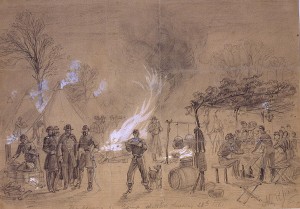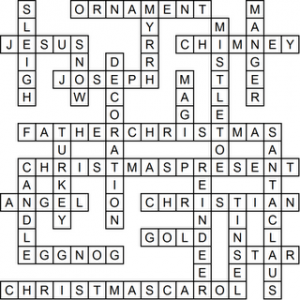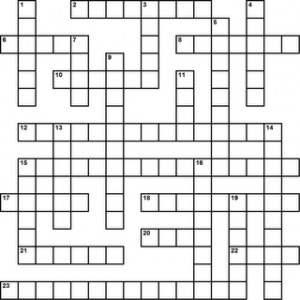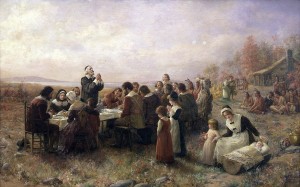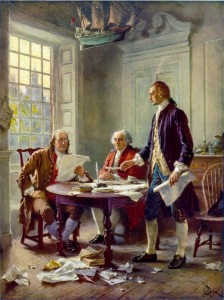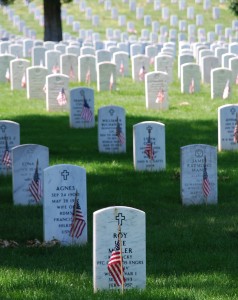
Click for larger image
In the U.S., next Monday is Memorial Day. It is always the last Monday in May. The origins of this holiday date back to the time just after the American Civil War, when various informal remembrances to honor the war dead of the Union Army began to spring up across the country.
The holiday was originally called “Decoration Day” because of the emphasis on honoring the fallen soldiers by decorating their graves. At first many of the Decoration Day remembrances were local, but in 1871 Michigan became the first state to adopt it as an official state holiday. By 1890, however, the holiday was recognized by all the Northern states. The Southern states had their own remembrance (Confederate Memorial Day) with the date ranging from sometime in April to sometime in June, but as time progressed, the two sides forgot their animosity, and eventually the May date was observed by both sides. The focus of Memorial Day also began to take on a broader focus, so by the end of World War I, Memorial Day became a remembrance of all Americans who gave their life in war, and not merely an observance of commemoration for the Civil War dead.
Although the name “Memorial Day” was first used in 1872, it did not become more common until after World War II, and in 1967 it was officially changed to “Memorial Day.” Originally, Memorial Day was observed on May 30. This date was chosen because it was not the anniversary of a battle. Gradually, people wanted the convenience of a three-day weekend, so the date of Memorial Day became officially fixed in 1968 as the last Monday in May. It was just a few years later, in 1971, that Memorial Day became a federal holiday. The U.S. flag is flown at half-staff from dawn until noon.
Observance of Memorial Day typically includes a parade, followed by a ceremony. Soldiers in various veterans’ organizations, such as the American Legion, the Veterans of Foreign Wars, and others, represent their fallen comrades. Speeches are given to remember the fallen, and to remind us of the ultimate sacrifice they gave to preserve our freedom. A favorite poem that is often recited at a Memorial Day observance is the poem “In Flanders Field”:
In Flanders Fields
by John McCrae
In Flanders fields the poppies blow
Between the crosses, row on row,
That mark our place; and in the sky
The larks, still bravely singing, fly
Scarce heard amid the guns below.
We are the Dead. Short days ago
We lived, felt dawn, saw sunset glow,
Loved and were loved, and now we lie,
In Flanders fields.
Take up our quarrel with the foe:
To you from failing hands we throw
The torch; be yours to hold it high.
If ye break faith with us who die
We shall not sleep, though poppies grow
In Flanders fields.
At the end of the ceremony, an honor guard fires several rounds of blanks, a wreath is placed on a grave (which is sometimes a symbolic grave, and not an actual one), and “Taps” is played; this is to represent the fallen soldier. A Memorial Day observance is a very somber event.
Other, less somber celebrations of Memorial Day include family-oriented activities, including picnics, cookouts or barbeques, camping, and other similar events. Many Americans enjoy the Indianapolis 500 (“Indy 500”), an auto race that is also held on the Sunday of Memorial Day weekend. And because Memorial Day is so close to the end of May, many people regard Memorial Day as the unofficial start of the summer season – outdoor swimming pools will open for the summer, and June is just around the corner, with graduations, end-of-the-year class picnics, and other events letting children know that the school year will soon be finished, and they won’t have to think about homework or lessons again until the end of August or the beginning of September.
Google

